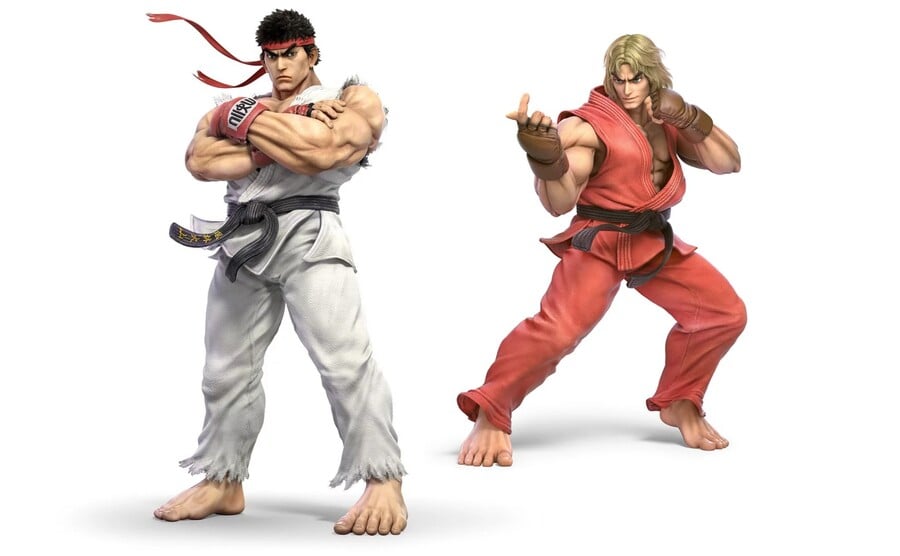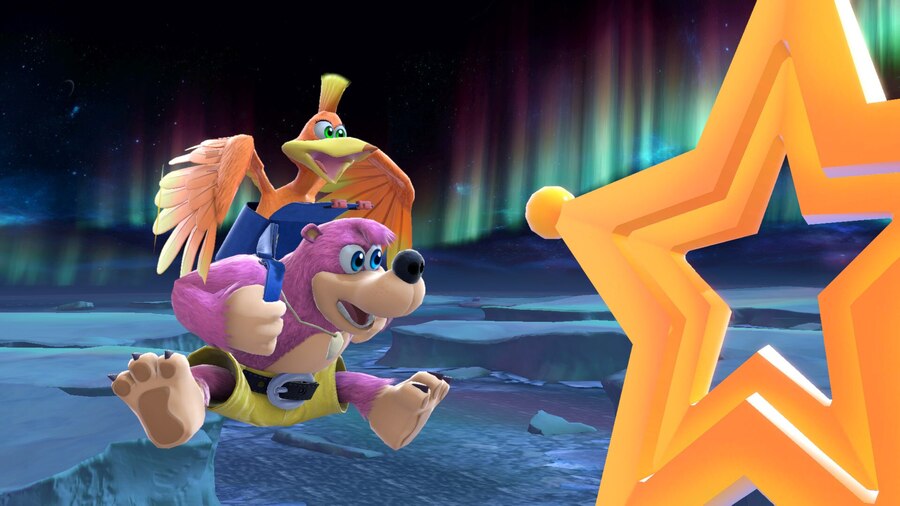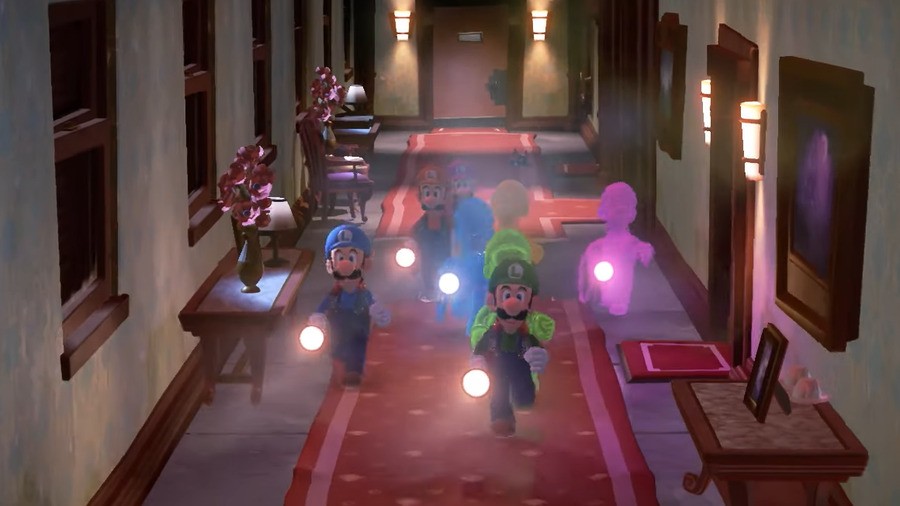
Luigi’s Mansion 3 releases in just a couple of days and rounds out a trilogy of excellent games featuring gaming's most famous sidekick in the starring role. Over the years Luigi has grown from mere clone to become a beloved Nintendo character and developed something of a cult following along the way. Perhaps his cowardice and humanity is easier to identify with than the bravado of his older brother, or maybe Luigi’s just smart enough to recognise the dangers these perilous platforming adventures pose. He might quiver at the sight of a Boo, but when push comes to shove Luigi is still there putting himself through hell for the sake of others. In fact, he has to work even harder than Mario to pluck up the courage and play the part of the hero. No wonder we love him so.

Anybody with even a passing interest in the history of video game design is by now familiar with how Mario took form in the 8-bit era. While Sega’s Sonic evolved from an internal company competition to find a competing mascot, the plumber himself was hewn from tech limitations. The hat, moustache and dungarees all came about in order to make the 16 pixel-high Jumpman readable to the player in Donkey Kong, simplifying the animation process and working within the tight sprite restrictions of the day. Indeed, he only got the plumbing gig due to the underground, pipe-filled setting of his next game, Mario Bros. – hardly an auspicious birth for the 'Mickey Mouse of Video Games™'.
Palette swapping – the practice of reusing a sprite with a different colour palette in order to save memory space – is a relic of an age of limitations.
But spare a thought for his poor put-upon brother! Luigi has grown taller over the years and he’s gained a flutter in his jump, but considering where he started out, the other brother has done incredibly well to escape the shadow of his iconic sibling and find himself a star in his own right. Long before the death stares and entire years dedicated to the green plumber, Luigi was nothing more than a clone; a cheap copy; a pixel-perfect doppelganger created so that two players would know which ‘Mario’ they were controlling. Now on his third solo ghost-sucking outing, Luigi is arguably the most famous palette swap in history.

Palette swapping – the practice of reusing a sprite with a different colour palette in order to save memory space – is a relic of an age of limitations. Nowadays multi-terabyte hard drives, cloud saving and massive Day One patches are the norm, but in the early ‘80s it was a luxury to be able to have more than a handful of distinct characters on the screen. Many of video games’ most famous personalities were birthed by palette swap and although they may have looked identical, subtle tweaks sometimes imbued them with bespoke characteristics even in the early days. Pac-Man’s spectral nemeses Blinky, Pinky, Inky and Clyde may appear distinguishable only by colour, but each had a distinct ‘personality’ tied to its AI.
Luigi’s bumbling demeanour and height difference were only added later when technology allowed the depiction of the brothers as anything but twins.
Palette swaps were an economic way, in memory terms, to depict characters or enemies with different strengths or abilities without the need to create and store new sprite data. Green Koopa Troopas, for example, march along unthinkingly, falling into pits like lemmings, although their red shell-wearing brethren will turn at the edge of a platform and continue patrolling in the opposite direction. It’s a subtle change, but both enemies act distinctly according to their appearance.
When it came to two players, such as in the aforementioned Mario Bros., the most efficient way to add a second character was to duplicate the titular Mario and change his colour values. It wasn’t until 1988 on the box art of Japan-only Famicom Grand Prix II: 3D Hot Rally that he took on the taller, trimmer physique that we’re familiar with today, and gradually that design found its way into the games. His increased height and higher jump were largely the result of inheriting the characteristics of 'Mama' when Yume Kōjō: Doki Doki Panic was remade as Super Mario Bros. 2. His bumbling demeanour would evolve later but Super Mario World would be the last time Luigi appeared as a mere palette swap of his brother.

Luigi is not alone in the field of clones that outgrew their origins to become beloved characters, though. Arguably the next most famous example is Ryu’s western counterpart in the Street Fighter series. Created for a second player to control in the original Street Fighter, Ken Masters began life as Ryu’s friend and rival with an identical moveset and only minor cosmetic differences. As the sequels came, Ken quickly diverged into an utterly separate fighter and evolved a unique personality and style of his own, but again, he started out as a quick 'copy-paste'.
In fact, palette swaps are rife in the fighter and beat ‘em up genres. Belt-scrollers like Final Fight and Streets of Rage are filled with repeated and recoloured figures – how many hundreds of 'Galsias' and 'Donovans' have felt the steely justice of your Grand Uppers? Sub-Zero and Scorpion from Mortal Kombat are another pair (or trio including hidden character Reptile) that became legends apart. The lore behind this infamous fighting series is incredibly in-depth, but just as with Mario’s lanky brother, they were all birthed from simple technical limitations. Beginning as an embodiment of 'fire and ice’, designer Ed Boon has spoken about how memory restrictions forced the developers to get creative with the resources available:
Memory was very, very scarce, so if you add more memory to your game, your game costs that much more, and then it costs the company that much more. A lot of attention went into the economics of it, and so we knew that if we could take a character and change their color and use basically the same memory to create two characters, we'd save a lot of money and we'd have two characters.
We colored the yellow ninja blue and created this blue ninja. We're giving them moves and everything, and blue looked like ice, so that gave the theme of Sub-Zero and freezing people. Yellow looked like fire, and that was like the Scorpion thing. They were opposites of each other, and that prompted the story behind them being these opposing ninja-clan-type characters. Everything rolled off of that.
Memory and other tech limitations of that sort don’t exist in the same way anymore; these days it’s time rather than tech which devs are up against. The palette swap is still alive and well, though; it just goes by a different name and more often than not you’re paying for it separately. DLC skins and alternate costumes offer variety without developers needing to reinvent the wheel with every character. Aside from the eight alternate 'costumes' for each fighter, the shadow fighters and Mii costumes in Smash Bros., for example, provide a dose of cosmetic fan service but require only a fraction of the dev time compared to an all-new fighter.

And, of course, it’s not just fighting games where we get umpteen wardrobe options. Alternate costumes appear in nearly all games nowadays. Super Mario Odyssey put costume changes at its heart and the bizarre combinations available were just one of that game’s many delights (Mario pulls off the 'Mad Scientist in Wedding Dress' combo much better than we could ever have predicted). Everyone likes playing dress up, no?
And Nintendo is still up to its old tricks when it comes to offering palette swaps for second players. In Luigi’s Mansion 3 it’s Luigi himself getting cloned, with gunge-y doppelganger Gooigi congealing into existence to offer assistance. We've previously seen the even-greener one in the Luigi's Mansion remake on 3DS, and he's essentially a Luigi who can walk through hazardous spikes and barred doors like the T-1000. Hmm, perhaps he's scarier than we realised...

Will Gooigi spawn an entire franchise of his own and break off to develop his own personality, though? Time will tell, and he's already got two appearances under his belt, but it's hard to imagine. Then again, the same could have been said about Luigi himself, and he's become a stalwart member of the Mushroom Kingdom lineup. Despite his cowardly persona he’s always on hand, ever-dependable and ready to rescue whoever’s carelessly got themselves kidnapped this week. Oh no, Luigi doesn’t let a little thing like bone-chilling fear stop him! And on top of that, there's a strong argument that he's simply better than Mario.
No, honestly. Not only does he jump higher - surely the standard by which we should measure any platforming hero - but nowadays he’s associated with the more challenging, ‘pro’ version of Mario’s vanilla adventure; the ‘Second Quest’, if you will. Think of New Super Luigi U or the adventures that start after Mario has 100-percented Super Mario Galaxy and its sequel. That's just the start for Luigi. So, essentially, what Nintendo is not-so-subtly telling us is that Luigi is more hardcore than Mario, the ‘Pro’s pick’, the true hero. Not bad for a palette swap.





Comments 18
I always picked Luigi because green is my favorite color. You can only imagine my disappointment when I discovered he was missing in so many of Mario's games. I had always hoped he would star in his own adventure someday.
However, I can't say that I'm a fan of Luigi's Mansion. It just doesn't interest me at all.
Uh, where's Jimmy? Y'know, from Double Dragon?
@Sgt-Jack-V
Oh, you mean B I M M Y
Nice article, fun to read
I guess I'm glad we didn't delve deep into sprite era RPGs and the whole Goblin/Hobgoblin/High Goblin/Dark Goblin shenanigans
This was definitely a fun read. I'm always up for some history, particularly if it's related to gaming.
Other great palette swap duos are Bill Rizer/Lance Bean (Contra), Rash/Zitz (Battletoads), Blade/Striker (Bad Dudes), Ralf/Clark (Ikari Warriors), and lastly Bub/Bob (Bubble Bobble).
something something
spiderman clone saga !
@Elvie
Technically the TMNT are all palette swaps of each other too.
But it's amazing just how much influence Doki Doki Panic had on the Mario series and weegie in particular.
How about modeling swaps? Well, Luigi’s friend Daisy is one based off Peach who deveoped her own personality, but with mostly the same abilites for balancing reasons and the fact that players can freely pick between Peach and Daisy according to preference! In Double Dash, Mario Kart 8 Deluxe, and Smash Bros. in particular.
I wish she was in Luigi’s Mansion 3. Maybe someday she will be a star...someday
Scorpion and Sub-Zero weren't a 100 percent palette swap. I remember being impressed that they had different stances, which was a nice detail and not a common thing in those days. The different stances probably only cost a tiny amount of memory. It was a neat way of doing a palette swap.
If we're talking about reskins, Super Mario Bros. 2 was a "palette swap" of an ENTIRE GAME
I am now at level 8. I can say with confidence that this is the best Nintendo game for Switch after BotW. More fun than any previous Luigi's mansion games.
The performance is great, no frame drops like Link's Awakening. Surprisingly they actually use anti-aliasing, no jaggies at all and it didn't caused any performance issues.
@WaffleKnight : So was DOOM II, which introduced some new monsters and a single new weapon. The fact that it recycled a lot of content didn't diminish the fact that it is a great sequel.
But then you have Final DOOM which was two glorified DOOM II map packs (as a standalone game) for full price!
The Pokémon games also recycle the engine/assets each generation as well, and in the case of Black 2/White 2, they produced a sequel that was primarily comprised of existing assets.
@CheapCheepBeach Daisy didn't originate as a palette or model-swap, though. She appeared as her own character in Super Mario Land.
Great article! How about the Sega Saturn Daytona USA car palette swaps that added depth and a little more variety versus the arcade iteration?
MK - to save even more money they got the Johnny cage actor to dress as the ninja!
@KitsuneNight In the comics they are identical down to mask color (all red). It was the cartoon that gave each their color. And now they finally have different body shapes too.
@SmaggTheSmug
I'm aware.
But that was just the covers though and V2 which was in hideous color.
The original Mirage v1 and 4 and Image v3 were in black and white.
( Except for the First comics collections )
I was referring to the Konami games though, were all that separated them was their bandana's and weapons.
The TMNT do have different hues and body shapes in the 2012 series and the 2011 IDW comic series.
Back when I was in college, there were a lot of "bros", but the word "bro" wasn't a thing yet. One of my best friends came up with the term "pallete swap", and man oh man I WISH it had become a thing instead of the word "bro". Because then the gamer nerds win!
Tap here to load 18 comments
Leave A Comment
Hold on there, you need to login to post a comment...